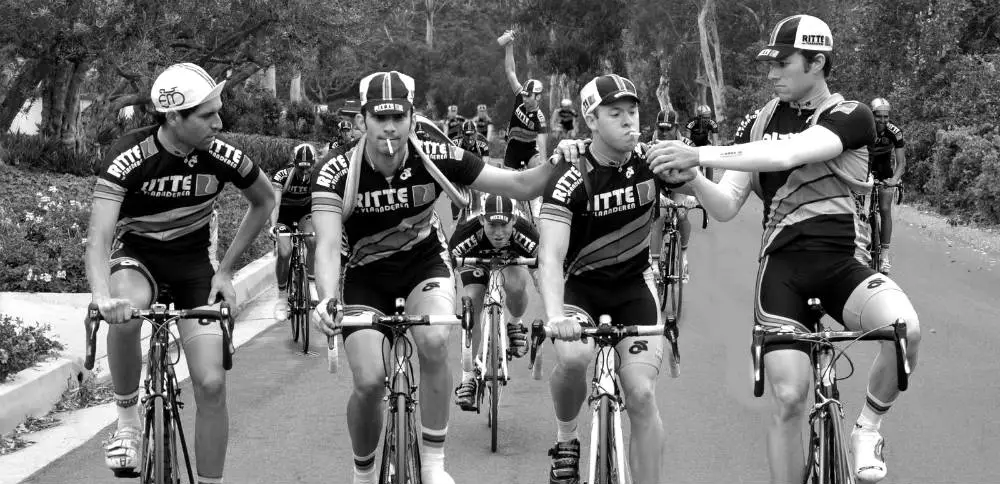Endurance sports require athletes to push their limits and in the past three decades, they are regularly under pressure to achieve faster times and perform better. Unfortunately, some of them are trying to achieve that illegally by using enhancing drugs.
That’s why the World Anti-Doping Agency created a list in 2009 that bans various methods and substances such as erythropoietin, a few other erythropoietin-stimulating agents and methods focused on improving oxygen transfer in an unhealthy way.
The stimulants and methods we have mentioned are especially useful for endurance sports such as cycling and distance running. Although these drugs and methods are banned we are witnessing that their use among athletes is still present and now and then we hear about athletes who are positive on drug tests.
Athletes practicing endurance sports often use altitude training as a way to improve their performance and increase the amount of hematocrit and serum hemoglobin in their system. But, only a few of them are aware that the effects of this training don’t last long, because after they are back at a normal altitude their body returns to normal level and performance.
What makes this training worse is the fact that besides the short-term benefit, athletes risk their health because this type of training stimulates the occurrence of cerebral edema, pulmonary edema, and severe flatulence.

So, many athletes are prepared to risk their health only to witness short-term and small benefits by practicing these methods, but what they and their coaches don’t know is that there are legal and perfectly safe alternatives.
This may sound like a surprise, but cigarette smoking is a practice that increases the hematocrit and serum hemoglobin levels in the body. In addition, it also stimulates weight loss and increases lung volume. These are all things that endurance athletes look for to improve their performance.
Cigarette Smoking – Factors Related to Endurance Performance
Cigarette smoking affects three factors that are directly related to endurance performance – lung volume, serum hemoglobin, and weight loss.
1. Lung volume
Although some experts don’t include this factor when creating a program that is focused on improving performance in endurance sports, the fact is that the larger the lung capacity the better results from the endurance training we can expect. We are all aware of the fact that long-distance runners, swimmers, and cyclists have increased lung capacity. In addition, similar effects can be seen from cigarette smoking especially when the person develops a chronic obstructive pulmonary disease. However, only half of long-term smokers have this syndrome.
2. Serum hemoglobin
It was confirmed numerous times that the concentration of blood hemoglobin is related to endurance performance and the overall oxygen-carrying capacity. On the other hand, decreased levels of hemoglobin in the blood usually mean reduced oxygen uptake ability and sub-maximal exercise capacity. That’s why athletes often try to affect the level of hemoglobin by using blood doping in the form of exogenous hormones in combination with altitude training. Besides being illegal, these methods pose a threat to the overall health of athletes. These are short-term effects that usually last up to two days after the training starts, but they are gone after one week.
Surprising is the fact that cigarette smoking is a way to increase hemoglobin levels constantly. By smoking ten or even more cigarettes every day, people can increase hemoglobin levels by 3.5%.
3. Weight loss
Having low body weight is an advantage in weight-bearing endurance sports like distance running for example. Many studies have confirmed that cigarette smoking stimulates weight loss through appetite suppression and increased metabolic rate. Nicotine the main active ingredient in cigarettes is directly affecting the feeling of hunger.
Endurance athletes usually have increased levels of appetite because of the intensive and exhausting training sessions. This situation can be enhanced even more if the person who smokes has developed the previously mentioned COPD. These smokers need to use more energy to breathe when they are inactive which means that they burn more calories.
Discussion
It was scientifically proven many times that cigarette smoking is increasing the levels of serum hemoglobin in the system and it also supports weight loss and these two factors are improving the performance in endurance sports. However, the number of smokers among top athletes in these sports is very low compared to the general population. The reason for this situation is not very clear and although governing bodies in every country are not creating campaigns against cigarette smoking for athletes they are surely not encouraging smoking among them.
Truth be told, there is a need for more research that can precisely tell us when and in which way cigarette smoking can be implemented in endurance training programs.
Source: http://www.ncbi.nlm.nih.gov/pmc/articles/PMC3001541/
